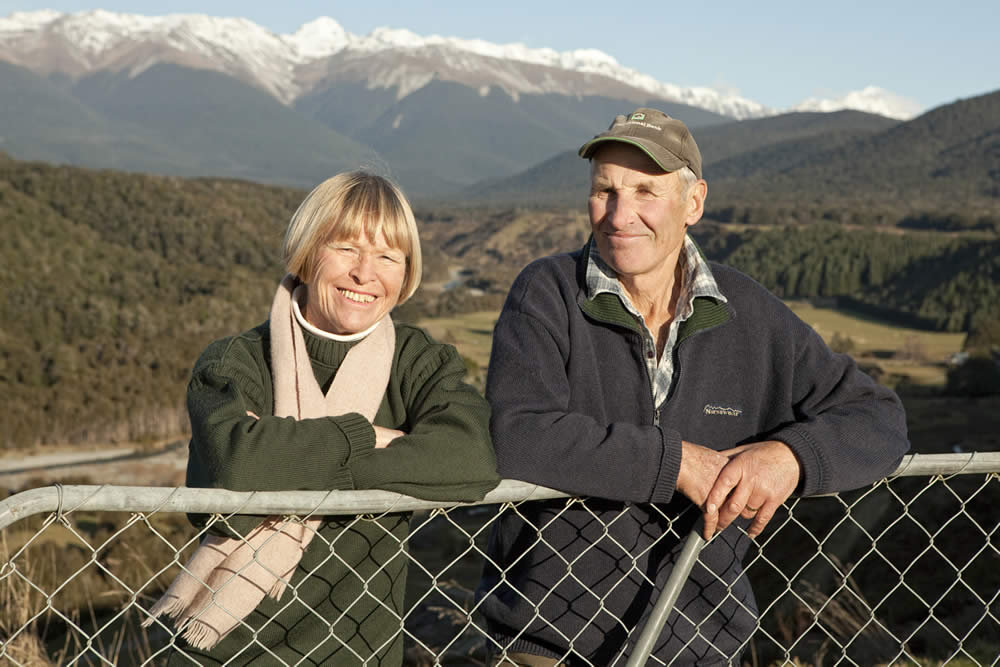
Gary Basher (pictured with wife Elizabeth) spent four decades developing Howard Head farm in Upper Moutere with a breeding programme to reflect a very particular environment – a sub-alpine environment (500 – 1500 metres with around 1800mm of consistent rain year-round).
There were four cornerstones to his genetic philosophy; (i) selecting genes from a location with similar physical characteristics (and not necessarily in the local area); (ii) having a breeder with sufficient numbers to build a highly consistent line, (iii) ensuring his breeder had a strong culling policy and (iv) a strong match between the breeder’s future genetic goals and his own.
Gary has always seen his job as understanding the property’s strengths and weaknesses, finding genetics that best suit this and feeding the animals to express these. That way he says he can more-or-less ‘coat-tail’ off the gains achieved by the breeder.
Gary had two ‘Eureka’ moments during his 40 years.
First, a monitor farm study demonstrated that his farming conditions pretty much mirrored those of Winton. The second was when Gary was in Southland on a deer field trip, a line of Mt Linton romney hoggets happened to catch his eye.
He liked their look, their consistency and the environment they came from. And he liked their large numbers – around 24,000 at the time - and the breeder’s hard-nosed culling policy.
Although his 1700 ewes were dwarfed by Mt Linton’s numbers, he believes the numbers principle applies to any scale of operation. The most important thing for him was as much choice as possible for replacements and for maintaining as straight a line as possible.
Over the years this has paid off directly, with three national romney hogget awards and demand for his ewe hoggets around the South Island. Customers have benefited each year from genetic improvement he’s taken decades to achieve.
Howard Head and the stock was recently purchased by Tim and Julie
 Back
Back




